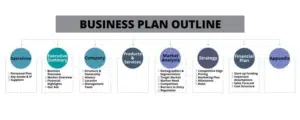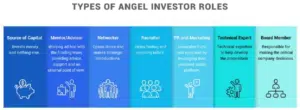Congratulations on successfully graduating dental school and earning your DDS or DMD. Statistics indicate that you are going to have a fulfilling and lucrative career, as US News and World Report’s 2021 Best Jobs Report lists being a dentist as the 9th best job in the country.
The American Dental Association estimates that 77% of dental practitioners own their own practice, and according to the Bureau of Labor Statistics, the average annual salary of a general dental practitioner is $180,830.
Before you set up shop, however, you’re going to have to learn about financing, administration and managing an office. You’re also going to need to become very cognizant about managing your own credit score. According to the ADA, starting a new dental office can cost between $350,000 to $550,000, depending on where you want to be located. Additionally, the cost of acquiring an existing dental practice can range from $500,000 to $750,000, according to Wells Fargo’s health care lending unit.
That, combined with the fact that you probably have student debt piled up, means you will have to take the necessary steps to line up financing if you’re looking to start a new practice or purchase an existing one.
Practice First
Before you think about starting out on your own, you may want to try to join a dental practice first. Doing so for a time will have many benefits when you seek to borrow money: it will allow you to establish your name as a dentist – something that a lender would look favorably upon. It will also give you a salary and allow you to start paying off your student debt (regular payments also help when seeking financing), and it will give you practical experience in the business side of running a dental office (i.e. like understanding the complexities of patient management and insurance).
Additionally, if you’re just starting out, practicing with another dental office gives you the opportunity to be mentored by more experienced dentists who can offer you career and business advice. You also need to become a member of the ADA – something that lending institutions often require when you’re seeking financing.
How Do You Assess Costs of a New Dental Practice?
Many new dentists may tend to overspend when starting a practice, so it’s important to itemize what you will need:
- Choose a location. This may be the most important decision you make. Your location will largely determine the cost of leasing an office. Real estate in both urban and densely populated suburban areas will obviously be more expensive than a rural area, but you must also factor in your need for patients, so it’s important to heavily research the area in which you want to open shop. What is the location in which you are likely to get the most business for the cheapest office space? What is the competition in that area? Is this a neighborhood in which you want to live or perhaps raise a family?
- Price out dental equipment. You’re obviously going to need a dental chair with a spit sink, which can cost up to $15,000, a dental x-ray machine which, according to the type of machine you buy, can cost up to $20,000, and other equipment. Like with any business, you want to find a supplier that you are comfortable negotiating with and that can accommodate your needs at the lowest possible price. Price out each item you will need.
- Assess costs of office equipment and software. You’re going to need furniture such as desks, couches and tables for the waiting room, office chairs and most importantly, a computer system. You will also need electronic health records software specifically made for dentists, which range in cost. If you are planning to be a family dentist, you may need to consider turning part of your waiting area into a children’s play area complete with a variety of toys appropriate for kids of all ages.
- Create a Website. Every small business needs an optimized website, including dental practices, because the internet is the first place people will turn to when looking for a dentist. Creating a website for your business may be a lengthy but worthwhile process.
- Get dental malpractice insurance. Malpractice insurance for any medical practice, including dental offices, is required in almost every state.
- Hire Personnel. You are also going to need:
- An office manager to keep track of appointments, insurance issues and to greet patients, among other things. According to Salary.com, the median wage for a dental office manager is $37 per hour.
- A dental hygienist to handle teeth cleanings, give patients information and help keep track of electronic health records. The average annual salary of a dental hygienist varies from state to state, according to ZipRecruiter. Washington state is the one in which dental hygienists make the most – the average annual salary is $84,957.
- A dental assistant to prep patients, sterilize equipment, organize dental tools and assist during dental procedures. According to ZipRecruiter, the average annual salary for a dental assistant ranges from $35,000 to $40,000 per year, depending on which state you are practicing in.
- An attorney to assist you with establishing your business as a limited liability company (LLC) or other type of establishment and to obtain business licenses in your particular state and community.
- Outside vendors to assist you with tasks that you may not be an expert in, including marketing and public relations, IT and optimizing your website.
- A financial consultant to give you advice on how to stay invested in your business and manage your money. Believe it or not, there are actually advisors out there that specialize in working with dental practices such as Dental Advisors.
Create a Business Plan
Like any other small business, in order to get financing, you’re going to need a business plan. You many want to get expert advice on how to create a plan, but these plans generally include:
- An executive summary of your business and description on why you believe your practice will be successful.
- A brief description of your services, be it a family practice or a dental office that specializes in root canals or other types of oral surgery.
- A summary of your practice’s management structure. This is especially important if you are opening a new dental office with another dentist.
- An analysis of your competition and marketing strategy. This is a brief description of who you will be competing with in your area and how you plan to attract new patients, and
- A financial plan. This is the most important element of your business plan when you go to seek financing, and you may want to consider consulting with an accountant on this. The financial plan will give cash flow estimates; your personal financial information and a detailed description on how you will spend your startup money, among other things.
Getting Financing
Seeing the total cost of starting a dental practice may hurt more than a root canal, but you do have plenty of options for financing. Plus, you have a unique advantage in that most dental practices usually end up being lucrative, and therefore, lending institutions tend to look favorably on them.
Many banks actually have lending programs specifically tailored to funding new dental offices, including Bank of America and Wells Fargo. This is different than with most small businesses that often need years in business and a strong cash flow history in order to secure a loan.
Practice loans often range from five to 12 years, and the rate depends on a number of factors, such as your personal credit score, location, and business plan.
While lending institutions are often eager to finance dental practices, however, getting financing isn’t guaranteed. In addition to a strong business plan, banks will look favorably upon you if you have some experience as a practicing dentist.
They want to see a strong personal credit score, so it’s important to make sure that you are up to date on student loan payments, car or mortgage payments and other bills, and have a strong payment history for any revolving credit cards you may have. If your student debt is overwhelming, you may even consider refinancing it to a lower monthly payment.
Remember – You’re not Just a Dentist!
Like any other doctor or medical specialist, as a dentist your first priority will always be taking care of your patients – as it should be. However, it is important to remember that your job isn’t just filling in cavities and performing root canals. If you are looking to open your own practice, your business savvy is just as important as your dentistry skills, and combining both will allow your practice to thrive.














